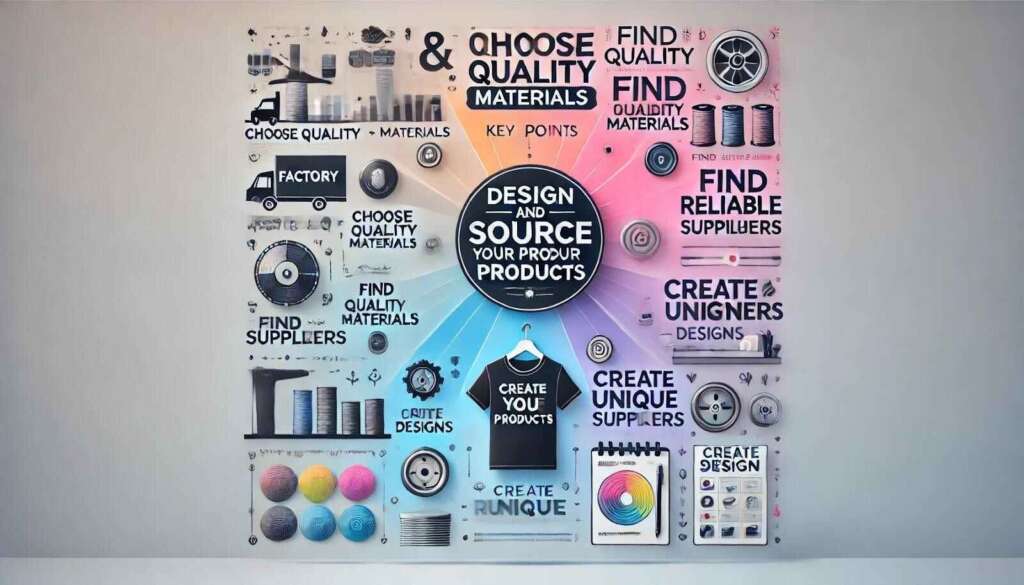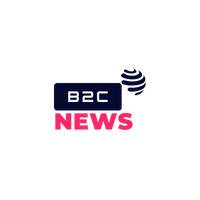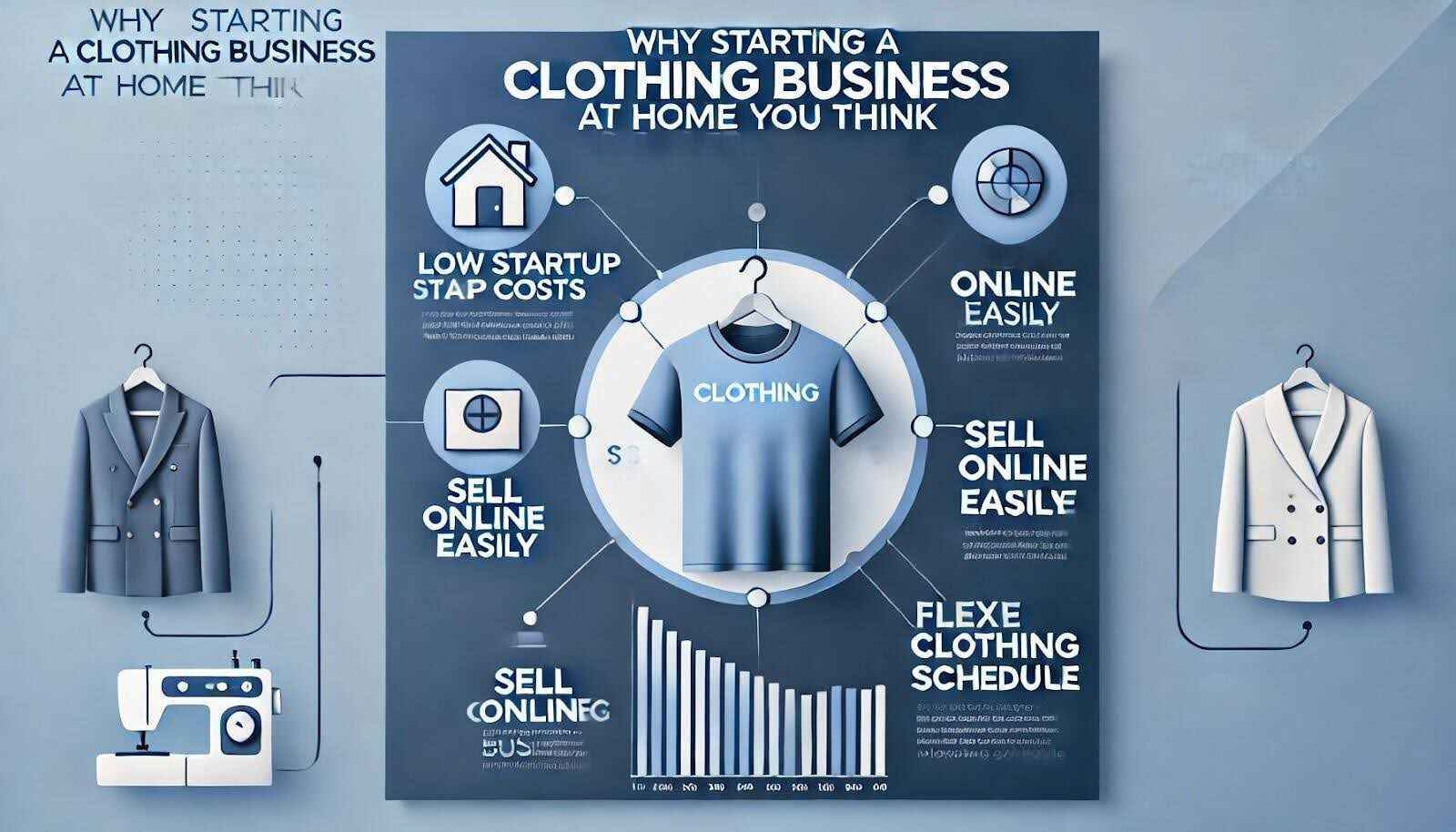Starting a clothing business from home is no longer a pipe dream. With the rise of digital tools and low-cost manufacturing options, aspiring entrepreneurs can now turn their fashion ideas into reality without draining their savings. The global apparel market, valued at over $1.5 trillion in 2023, is expected to reach $2.25 trillion by 2025. This highlights the immense opportunities for anyone looking to start a clothing line or a clothing business online (source).
Social media platforms like Instagram and TikTok have revolutionized how small business owners connect with their audience. Platforms like Shopify, Etsy, and Printful simplify the process of starting your own clothing business, while the print-on-demand model eliminates the need for upfront inventory. Sustainable fashion and online business models are also growing in demand, giving new entrepreneurs an edge.
This guide will help you learn how to start a clothing business step-by-step. Whether you plan on starting your own clothing business or expanding an existing clothing line, this roadmap covers everything from market research to managing customer loyalty. If you’re launching a clothing store with no money or creating a clothing line business plan, this roadmap will show you how to succeed.
If you’re interested in starting a clothing business, it’s important to make informed business decisions that set you up for success. Whether you want to launch your own clothing line or create an online clothing store without large upfront costs, having a clear vision is key. Begin by choosing a unique name for your clothing brand that resonates with your target audience and reflects your clothing designs.
As you plan, consider making wholesale clothing purchases to keep your production costs low as long as they align with your brand’s quality standards. Don’t overlook the tools you need to start, such as design software, e-commerce platforms, and marketing tools. If you’re starting an online business, ensure that every part of your clothing line delivers value and meets customer expectations.
Finally, think about the unique offerings you’ll offer in your online store, such as exclusive collections or customizable apparel, to stand out in the competitive market.
Key Takeaway: With digital tools and rising demand for niche fashion, starting a home-based clothing business is now more accessible and rewarding than ever.
Step 1: Research Your Niche and Target Audience
Starting a clothing business isn’t just about creating beautiful designs; it’s about finding the right niche and understanding who your customers are. Your niche determines what makes your brand stand out, while your audience ensures you’re designing for people who’ll buy your products.
Why Choosing a Niche Matters
A niche is your business’s unique focus. It helps you target a specific market and stand out in the crowded fashion industry. For example, offering eco-friendly yoga wear targets environmentally conscious fitness enthusiasts, while creating custom t-shirts for local events attracts a different audience. Popular niches include:
- Sustainable Fashion: Clothes made from eco-friendly materials.
- Streetwear: Bold, trendy designs appealing to young adults.
- Custom Apparel: Personalized clothing like printed t-shirts or embroidered hoodies.
Choosing a niche also allows you to develop a targeted business plan and establish a brand identity that resonates with your audience. For example, eco-conscious brands like Girlfriend Collective have succeeded by focusing solely on sustainable materials.
Define Your Ideal Customer
Understanding your ideal customer is crucial to your business model. Are you targeting teens interested in trendy clothing lines, professionals looking for custom office wear, or parents shopping for comfortable kids’ clothing? Defining your target audience’s student needs and shopping habits will help shape your products and marketing approach. To define them, ask yourself:
- What age group am I targeting?
- What are their interests, values, and spending habits?
- Where do they shop and interact online?
For example, if you’re designing minimalistic office wear, your target audience may include working professionals in their 30s who value high-quality, timeless pieces.
Competitor Analysis
Understanding your competition is vital for developing a successful business model. Analyze successful brands in your niche to identify gaps and opportunities. Use platforms like Etsy, Instagram, and Pinterest to study:
- Their pricing strategy.
- The designs and materials they use.
- Customer reviews—this often highlights what buyers love or wish was different.
For instance, if you notice a gap in affordable yet stylish maternity wear, you could tap into that underserved market.
Tools and Resources for Market Research
- Google Trends: Discover popular search terms in the fashion industry.
- Facebook Groups: Join communities related to your niche to gather insights.
- Statista: Access industry reports to understand market trends.
Key Takeaway: Researching your niche and audience helps you tailor your clothing brand to meet specific customer needs, making your online clothing business more likely to succeed.
Step 2: Design and Source Your Products

Creating unique designs is the cornerstone of any clothing business online. Even with a limited budget, it’s possible to create high-quality, unique designs that resonate with your audience.
Create Unique and Affordable Designs
Your designs are the heart of your business, so focus on creating something original. Here’s how to start:
- Sketch Your Ideas: Use design tools like Procreate or Adobe Illustrator to bring your concepts to life.
- Find Inspiration: Browse Pinterest, Instagram, and fashion blogs for trends while ensuring your designs remain unique.
- Collaborate with Designers: If you lack design skills, hire freelance designers from platforms like Fiverr or Upwork.
For example, if you’re targeting the eco-friendly niche, consider designs that incorporate minimalist patterns and earthy tones to align with your audience’s values.
Affordable Sourcing Options
Sourcing quality materials is critical to maintaining your brand’s reputation. Here are some budget-friendly options to start a clothing brand:
- Local Markets: Visit fabric wholesalers in your area for affordable materials.
- Print-on-Demand Platforms: Use services like social media marketing to generate buzz for your online clothing store. Printful or Printify to create custom designs without inventory risks.
- Global Suppliers: Platforms like Alibaba or Faire offer bulk pricing on fabrics and ready-made clothing.
For sustainable brands, consider suppliers specializing in organic cotton or recycled materials. Highlighting eco-friendly sourcing can also be a powerful marketing tool.
Test Your Products
Before launching full-scale production, test your designs with a small group. Share samples with friends, family, or a select audience and gather feedback on:
- Fit and comfort.
- Material quality is essential for building a reputable clothing line.
- Overall design appeal.
Testing allows you to refine your products and avoid costly mistakes during mass production.
Tools for Efficient Product Design and Sourcing
- Trello or Asana: Organize your design and sourcing tasks.
- Pantone Studio: Select the perfect color palettes for your designs.
- Canva: Create mockups for marketing and presentation.
Key Takeaway: Thoughtful designs and affordable sourcing strategies set the stage for creating high-quality products that resonate with your audience.
Step 3: Set Up Your Online Store Without a Huge Investment

Your online store is your brand’s digital storefront, and creating one has never been easier. Platforms like Shopify and WooCommerce are ideal for starting a business with minimal technical expertise.
Choose the Right E-Commerce Platform
Start by selecting a platform that fits your needs and budget. Popular options include:
- Shopify: Ideal for beginners, offering easy setup and great customization options.
- A well-designed website with a memorable business name and tagline.
- Etsy: Perfect for selling handmade or custom designs to a built-in audience.
- WooCommerce: A cost-effective option for WordPress users who want full control over their site.
Compare costs, features, and audience reach before deciding. A platform like Shopify might be worth the investment if you want scalability, while Etsy is better for niche markets.
Create a Professional Brand Presence
Branding sets your store apart. To create a polished, professional brand:
- Design a memorable logo and tagline using free tools like Canva.
- Choose consistent colors, fonts, and visuals for your website and marketing materials.
- Write compelling product descriptions that highlight features, benefits, and unique selling points.
Leverage Social Media Integration
Social media plays a crucial role in promoting your online store. Platforms like Instagram and TikTok allow seamless product tagging and direct-to-store links. Engage your audience with:
- Behind-the-scenes content of your design process.
- Reels or TikToks featuring your products in use.
- Customer testimonials and reviews.
Simplify Payment and Shipping
Offer convenient payment options like credit cards, PayPal, and digital wallets. Partner with affordable shipping providers to keep costs low for your customers.
Optimize for SEO
Search Engine Optimization (SEO) ensures your store ranks high in Google search results. Use keywords like “affordable handmade clothing” or “custom eco-friendly apparel” in your product titles and descriptions.
Key Takeaway: Setting up a professional online store is achievable with affordable platforms, strong branding, and effective SEO strategies.
Step 4: Market Your Clothing Business on a Budget
Marketing your clothing business doesn’t have to break the bank. In fact, some of the most effective strategies are free or low-cost. The key is to focus on reaching your target audience where they spend the most time—online and in your local community.
Free and Low-Cost Marketing Strategies
There are plenty of ways to promote your brand without spending a fortune:
- Social Media Content: Post regularly on platforms like Instagram, TikTok, and Pinterest to showcase your designs. Use engaging captions and hashtags like #HandmadeClothing or #SustainableStyle.
- Email Marketing: Build an email list using tools like Mailchimp. Send updates about new launches, exclusive discounts, or behind-the-scenes looks.
- Collaborate with Local Influencers: Partner with micro-influencers who have an engaged audience within your niche. Offer free products in exchange for promotion.
Leverage User-Generated Content (UGC)
Encourage your customers to share photos or videos of them wearing your designs. Feature their content on your website or social media to build trust and showcase real-life testimonials.
Example: Create a hashtag for your brand, like #StyledBy[YourBrand], and incentivize customers to use it by offering discounts on future purchases.
Offer Promotions and Incentives
Promotions are a great way to attract new customers and encourage repeat business:
- Launch with a grand opening discount to generate buzz for your new clothing line.
- Offer a referral program where customers earn rewards for bringing in new clients.
- Provide free shipping on orders over a certain amount.
Key Takeaway: Focus on budget-friendly marketing strategies like social media content, influencer collaborations, and referral programs to maximize your reach without overspending.
Step 5: Scale Your Clothing Business Without Breaking the Bank
If you’re considering starting your own clothing line, having a clear plan is essential. The clothing industry offers endless opportunities, whether you’re launching a new clothing brand or aiming to start an online boutique.
Begin by exploring different types of clothing that resonate with your target audience, from casual wear to sustainable clothing, which is increasingly in demand. To sell your clothing effectively, you’ll need to create an online store that highlights your unique designs and caters to your audience’s needs. Choosing the right business structure is equally important, as it ensures your venture is legally compliant and scalable.
Whether you’re diving into e-commerce or opening an online clothing boutique, understanding your niche and how to position your products will help you stand out.
If you need a business that aligns with your passion for fashion, starting a brand with a solid foundation and innovative approach will set you on the path to success.
Scaling a clothing business involves expanding operations while keeping costs manageable. Growth should be intentional, focusing on efficiency and new revenue streams.
Streamline Operations
Use technology to make your processes more efficient:
- Inventory Management Tools: Apps like Zoho Inventory or Shopify help track stock levels and prevent overselling.
- Automation Tools: Automate tasks like email responses, order confirmations, and marketing campaigns using tools like Zapier.
Expand Product Lines Strategically
Introduce new products that complement your existing collection. For example:
- If you sell casual t-shirts, add hoodies or tote bags with matching designs.
- Seasonal collections can attract repeat customers looking for fresh items.
Partner with Other Businesses
Collaborating with like-minded brands can help expand your reach. For instance, if you want to start an online clothing store, understanding your niche is crucial.
- Partner with a local boutique to feature your clothing in their store.
- Collaborate with an accessory brand to create bundled products.
Explore Wholesale Opportunities
Sell your designs in bulk to retailers or online marketplaces. Wholesale partnerships provide consistent revenue and exposure to a broader audience for your online clothing store.
To launch your clothing business successfully, it’s essential to build a foundation with a solid business model that aligns with your goals. Whether your clothing line may focus on eco-friendly clothing or traditional designs, having the right resources is key.
Start by opening a dedicated business bank account to manage finances effectively and secure business insurance to protect your venture. As you start your journey, explore options like a reliable ecommerce platform like Shopify to simplify selling clothes online.
Leveraging the print-on-demand clothing model can also reduce upfront costs, allowing you to scale easily. Additionally, sourcing wholesale clothing as long as it meets your quality standards can enhance your inventory. With careful planning, you can establish a brand that resonates with customers and sets you apart in the competitive fashion industry.
Key Takeaway: Scaling your clothing brand involves streamlining operations, introducing complementary products, and forming strategic partnerships to maximize growth potential.
Step 6: Manage Customer Loyalty for Long-Term Success
Customer retention is more cost-effective than acquiring new clients, so investing in loyalty-building strategies is key to long-term growth.
Build a Loyalty Program
Reward repeat customers with points they can redeem for discounts or free products. For example:
- “Earn 1 point for every $1 spent and redeem 50 points for a $5 discount.”
- Offer exclusive early access to new designs for loyal customers.
Collect and Act on Feedback
Listen to your customers to improve your products and service:
- Use surveys or email follow-ups to gather feedback.
- Offer incentives, like a small discount, for filling out surveys.
Provide Exceptional Customer Service
Prompt and polite responses to customer inquiries build trust and encourage positive word-of-mouth. Use live chat features on your website or social media platforms to address questions quickly.
Key Takeaway: Loyal customers are the foundation of a sustainable business. Focus on rewards, feedback, and excellent service to keep them coming back.
Streamlining Your Clothing Business: A Step-by-Step Approach
Starting a fashion business doesn’t have to be overwhelming. With the right business idea and strategy, you can make it easy to get your venture off the ground. Begin by selecting a clothing manufacturer or exploring print-on-demand options, which reduce the initial cost to start and simplify inventory management.
Next, focus on how to sell clothes effectively—whether through an online boutique or by leveraging e-commerce platforms to sell online. Building a strong foundation requires you to register your business and ensure your operations meet legal requirements.
If you want to build an online presence, prioritize creating a seamless shopping experience for customers. Offering clothes online isn’t just about the products; it’s about delivering a top-notch customer experience that builds trust and loyalty.
Finally, develop a clear business strategy that aligns with your goals and allows your clothing company to scale effectively in the competitive market.
Conclusion: Launching a Successful Clothing Business Today
Launching a successful clothing business in today’s competitive market requires strategic planning and execution. Whether you’re starting your own online clothing store, leveraging the print on demand model, or selling clothing items through a personalized e-commerce platform, the key lies in understanding the right type of business for your goals. Obtaining a proper business license ensures your operations run smoothly and legally, while a clear guide on how to start helps streamline the process.
To truly stand out, focus on your clothing brand’s aesthetic, ensuring it aligns with your audience’s preferences. From creating a recognizable label on wholesale clothing to promoting your brand effectively, there are many ways to start selling and growing your venture. When you promote your clothing business with engaging marketing strategies and excellent customer service, you set yourself up for long-term success.
With dedication and the right tools, you can transform your passion into a thriving brand. So take the first step today, define the type of clothing business you want to build, and turn your vision into reality.
Summary
- Niche research and understanding your target audience are crucial for a strong foundation.
- Thoughtful product design and affordable sourcing set the stage for high-quality offerings.
- Marketing on a budget through social media and promotions helps maximize reach without overspending.
- Scaling requires efficiency, partnerships, and expanding strategically.
- Building customer loyalty ensures long-term success and growth.
FAQs
1. How much money do I need to start a clothing business from home?
Starting a clothing business from home typically requires anywhere from $500 to $5,000, depending on inventory, equipment, and marketing expenses.
2. What’s the best platform for selling handmade clothing?
Etsy is the best platform for handmade clothing due to its large customer base and focus on unique, crafted items.
3. How can I market my brand if I’m new to social media?
Start with Instagram and TikTok, post consistently, engage with followers, and use hashtags to increase visibility.
4. What are the most common mistakes to avoid when scaling a clothing business?
Avoid overstocking, neglecting customer feedback, and scaling too quickly without optimizing operations.
5. How do I choose between dropshipping and in-house production for my brand?
Choose dropshipping for low upfront costs and flexibility, or in-house production for more control over quality and profits.

